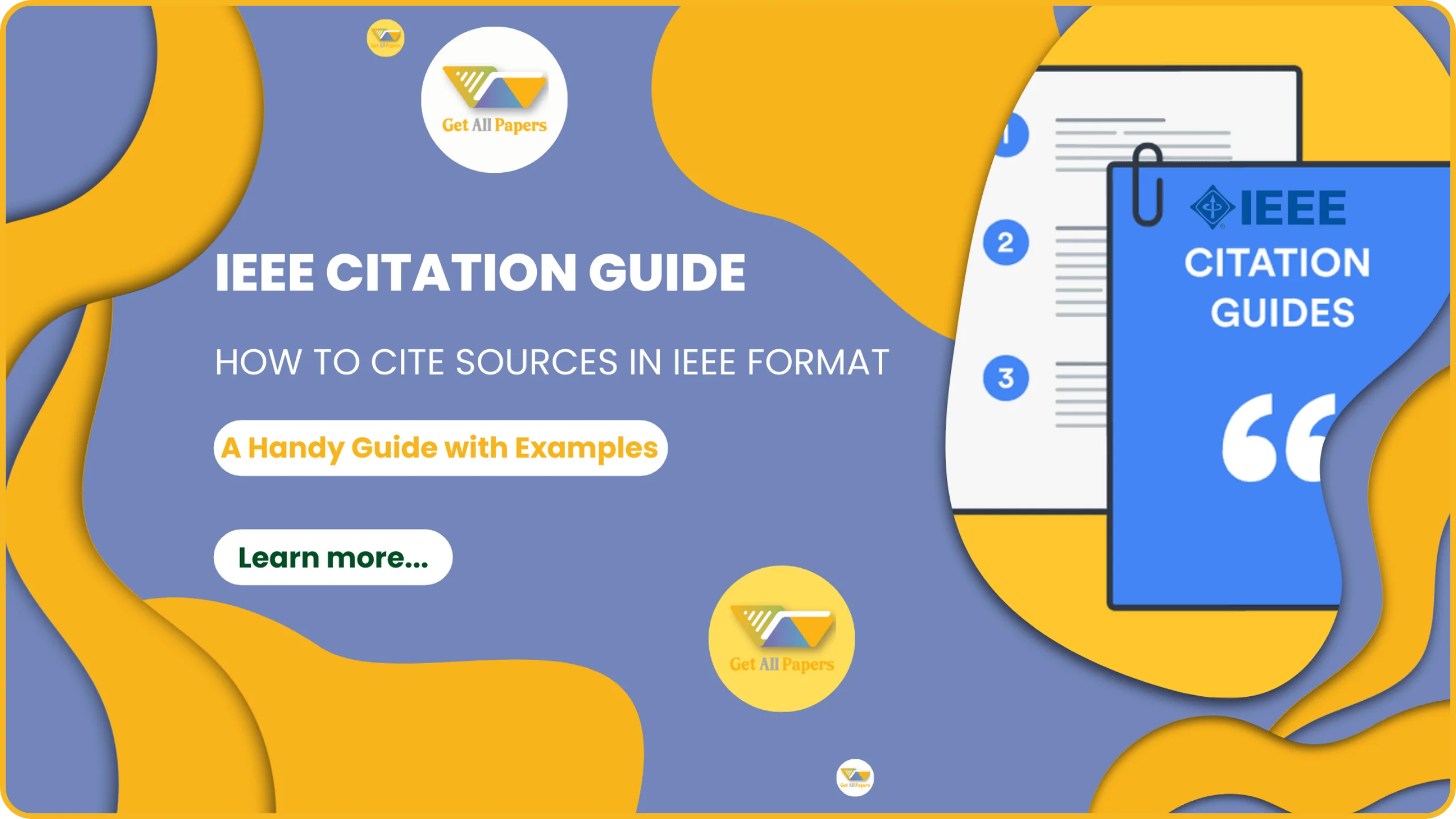
IEEE Citation Guide: How to Cite Sources in IEEE Format
Written By: Melissa M. Shaffer
Published On: Oct 04,2023
Introduction
When it comes to academic writing, citing your sources correctly is crucial. Whether you're working on a homework assignment, a critique paper, a term paper, or various types of essays such as narrative, descriptive, informative, argumentative, or persuasive, adhering to a standardized citation format is essential. In the world of engineering, computer science, and other technical fields, the IEEE citation style is often the preferred choice. In this article, we'll delve into the IEEE citation guide, helping you navigate the intricacies of this format to improve your essay writing skills and maintain academic integrity.
Understanding the IEEE Citation Style
The Institute of Electrical and Electronics Engineers (IEEE) has developed a standardized citation style primarily for fields related to electrical engineering, computer science, and information technology. This style is known for its clarity and precision, making it ideal for academic papers where accuracy is paramount.
In IEEE citation style, references are numbered sequentially, and each source is assigned a unique number in the text, which corresponds to a full citation in the reference list. This system helps readers easily locate the sources you've used in your paper, and it ensures that your work is well-documented.
Creating a Proper IEEE Citation
To cite sources in IEEE format, follow these guidelines:
- In-text citations: When referencing a source within your text, use square brackets with a numeral to indicate the source's order of appearance. For example, if you're citing your first source, it will look like this [1]. The number corresponds to the entry in your reference list.
- Reference list: At the end of your paper, compile a reference list in numerical order based on the in-text citations. Each entry should include the author's name (if available), the title of the source, the title of the publication (in italics), the volume and issue (for journals), page numbers, and the publication year. Here's an example of a journal citation:
[1] J. K. Author, "Title of the article," Title of the Journal, vol. 5, no. 2, pp. 100-110, 2021.
3. Online sources: When citing online sources, include the URL in square brackets after the reference.
How to Use IEEE Citation in Your Essays
Now that you understand the basics of IEEE citation, let's see how you can use it effectively in your essays. Whether you're writing a narrative essay, a descriptive essay, an informative essay, or an argumentative essay, proper citation is key to presenting your ideas in a clear and organized manner.
- Develop a thesis statement: Before diving into your essay, create a strong thesis statement that encapsulates the main point or argument you want to convey. This will serve as the backbone of your essay and guide your research.
- Conduct thorough research: Once you have your thesis statement, start researching relevant sources. Use academic databases, libraries, and reliable websites to gather information that supports your thesis.
- Keep track of your sources: As you gather information, make a note of each source's details, including the author, title, publication date, and page numbers. This will save you time when creating your reference list.
- Integrate citations smoothly: When incorporating information from your sources into your essay, use in-text citations following the IEEE format. This not only gives credit to the original authors but also allows your readers to verify the information.
- Structure your essay: Depending on the type of essay you're writing, organize your content logically. Use proper headings and subheadings to make your essay more reader-friendly.
- Revise and edit: After completing your essay, review it for clarity, coherence, and proper citation. Ensure that your in-text citations match the entries in your reference list.
Tools to Assist with IEEE Citation
Citing sources in IEEE format can be time-consuming, but there are several tools and resources available to make the process easier. If you're looking for assistance, here are some options:
- Reference management software: Tools can help you manage your references and automatically generate IEEE citations for your sources.
- Online citation generators: Websites can generate IEEE citations for your sources when you input the necessary information.
- Essay writing services: If you find yourself overwhelmed with multiple assignments and need expert assistance, you can consider using a reputable essay writing service. These services often have experienced essay writers who are well-versed in various citation styles, including IEEE.
Conclusion
In conclusion, mastering the IEEE citation style is essential for students and researchers in technical fields. Whether you're working on a homework assignment, a critique paper, or any type of essay, following the IEEE citation guide will enhance the quality and credibility of your work. Remember to maintain academic integrity by properly citing your sources, and consider using citation management tools or essay writing services when needed to streamline the process. With these skills and resources, you'll be well-equipped to excel in your academic endeavors and produce high-quality essays.
Related Posts
Popular Article







